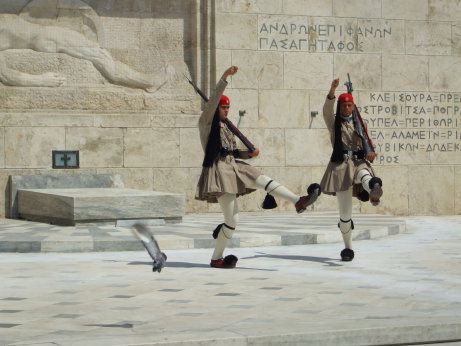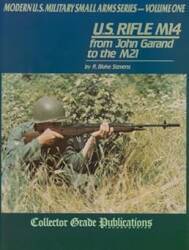
The History of the M1 Garand —
The M1 Garand After 1957
After 1957
The M14 rifle replaced the M1 as the U.S. Army's standard service rifle in 1957. The M14 is a direct descendent of the M1, very similar in many ways. It most obviously differs by having a 20-round box magazine rather than the 8-round internal magazine fed by clips, and firing the 7.62x51mm NATO cartridge, also known as .308 Winchester.

The History of the M1 Garand Rifle
The Early Designs and Initial Adoption
Springfield Armory and World War II Production
However, the M1 did not immediately disappear from service. And its immediate replacement, the M14, remains in active service with the U.S. military today as designated marksman and sniper rifles.
Slow Replacement of the M1 Garand 1957-1970s
The M1D was the official sniper rifle for the U.S. Army until its replacement with the 7.62mm M21 Sniper Rifle in the mid 1960s.
What's more, M1s saw service in Vietnam until the early to mid 1960s. The active-duty component of the U.S. Army did not complete transition to the M14 until 1965. Other military components, including the Army Reserve, Army National Guard, and U.S. Navy, continued to use Garands at least into the 1970s.
The production history of the M14 shows the continuing use of its predecessor, the M1.
Just as the T1E2 became the M1, an experimental design known as the T44 was accepted as the M14 in 1957. However, Springfield Armory had to retool their production line — that process only began in 1958, and the first M14 service rifles were not delivered to the U.S. Army until 1959.
Production grew slowly. The 101st Airborne Division was the first Army unit fully equipped with the new M14. This replacement took until the end of 1961.
The Fleet Marine Force finished a change from the M1 to the M14 in late 1962.
The change from the M1 to the M14 was not completed until 1963 within the active-duty component of the U.S. Army. However, the M1 was still used in the U.S. Army Reserve, the U.S. Army National Guard, and the U.S. Navy at least into the 1970s.
M14 production continued through the completion of TRW's contract in 1965. 1,380,000 rifles had been acquired for a unit cost of just about $104.
Closure of Springfield Armory
In 1968, Secretary of Defense Robert McNamara closed the Springfield Armory, in a decision that was personal, political, and controversial. The former armory is now a National Historic Site run by the National Park Service.
That was the same year he ordered the destruction of the tooling used to manufacture the SR-71.

M1 rifles being carried by the Evzoni, or Proedriki Froura (Presidential Guard), at Plateia Syntagma (Constitution Square) in Athens.
Continuing M1 Use By Foreign Military
The Greek military used the M1 as its standard service rifle until the late 1970s. It was used as a training arm by the Hellenic Army into the late 1990s.
However, the last military using the M1 was Haiti's. The Haitian military was still using the M1 when it was disbanded in 1994.
A irregular auxiliary force of the Armed Forces of the Philippines, the Citizen Armed Force Geographical Unit or CAFGU, is said to still be using the M1 Garand (although recent descriptions instead mention the M16 and M14 in that order, implying, to me, mostly M16s). The CAFGU is intended as a local counter-insurgency force.
Continuing Ceremonial Use of the M1
A number of military drill teams still use the M1, including the U.S. Marine Corps Silent Drill Platoon and most ROTC and JROTC teams within the U.S. military, plus some non-U.S. military drill teams including that of the Hans Majestet Kongens Garde or Norwegian Royal Guards Drill Team and the Greek unit seen above. Click here to see some examples of M1 Garands carried by today's drill teams and honor guards.
The Reappearance of Springfield Armory (at least in name...)
With the original Springfield Armory shut down by McNamara's decision in 1968, a small company in Texas used the name for its manufacturing of its M1A rifle series, a line of civilian models of the M14. Six years later, in 1974, the company was sold to a family that expanded its product line to include custom M1911 pistols. The company is Springfield Armory, Incorporated. It's located in Illinois, with no connection to the original federal armory. They manufacture and import a number of firearms.
Garand Legacy at the Pentagon
On 27 June 1980, with John Garand's wife and two children looking on, the Secretary of the Army dedicated room 2E680 of the Pentagon as the Garand Memorial Conference Room.



